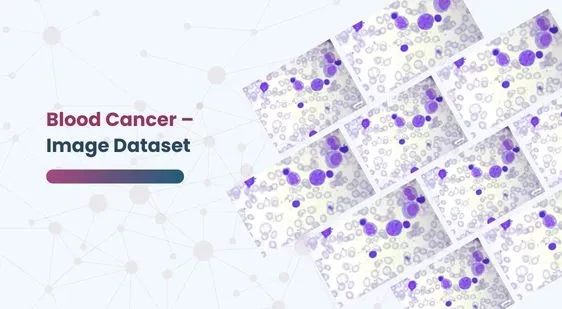Blood Cancer – Image Dataset
Home » Dataset Download » Blood Cancer – Image Dataset
Blood Cancer – Image Dataset
Datasets
Blood Cancer – Image Dataset
File
Cancer – Image Dataset
Use Case
Diagnosis Aid
Description
A "Cancer - Image Dataset" typically refers to a collection of medical images, such as blood smears or bone marrow samples, that have been used for research and analysis in the field of hematology, particularly for the detection and classification of blood-related cancers, such as leukemia and lymphoma.

About Dataset
This dataset has 10,000 images of single cells, each measuring 64×64 pixels. These images were taken from blood smears of patients diagnosed with Acute Myeloid Leukemia, which is a type of blood cancer.
The images were obtained from The Cancer Imaging Archive (TCIA).
Citations:
“Matek, C., Schwarz, S., Marr, C., & Spiekermann, K. (2019). A Single-cell Morphological Dataset of Leukocytes from AML Patients and Non-malignant Controls [Data set]. The Cancer Imaging Archive. https://doi.org/10.7937/tcia.2019.36f5o9ld
Matek, C., Schwarz, S., Spiekermann, K. et al. Human-level recognition of blast cells in acute myeloid leukaemia with convolutional neural networks. Nat Mach Intell 1, 538–544 (2019). https://doi.org/10.1038/s42256-019-0101-9
Conclusion
In the end, just like a movie based on a book, the worth of blood cancer image datasets depends on their quality and ethical handling.
A collection of images of blood cancer can be incredibly helpful for doctors and researchers. It can greatly improve our ability to diagnose and study this disease. Such a dataset can help us identify the exact type of blood cancer, choose the best treatment options, advance research efforts, and serve as a valuable learning tool. However, the real measure of these datasets is their quality and whether they adhere to ethical standards.
This dataset is sourced from gts.ai.
Contact Us

Quality Data Creation

Guaranteed TAT

ISO 9001:2015, ISO/IEC 27001:2013 Certified

HIPAA Compliance

GDPR Compliance

Compliance and Security
Let's Discuss your Data collection Requirement With Us
To get a detailed estimation of requirements please reach us.
